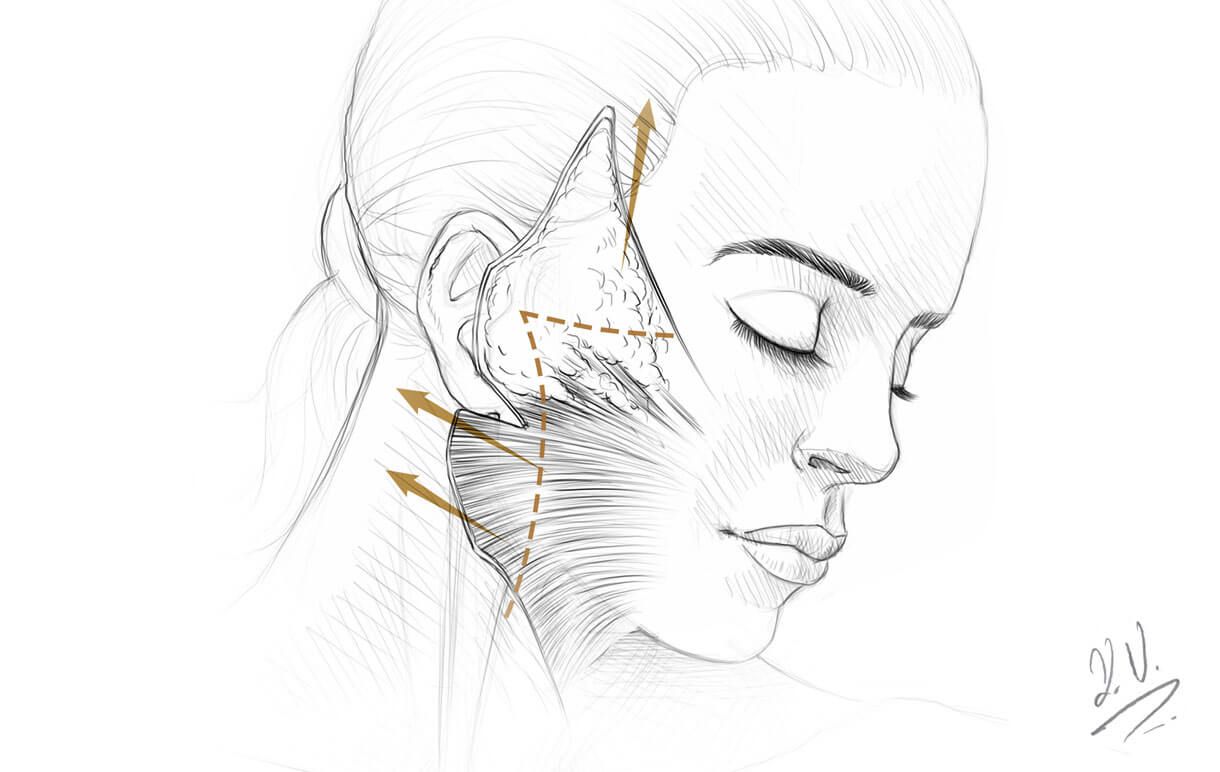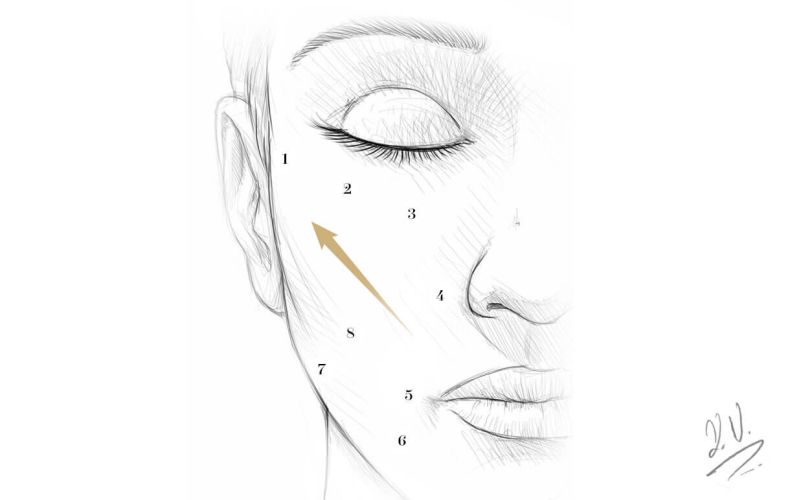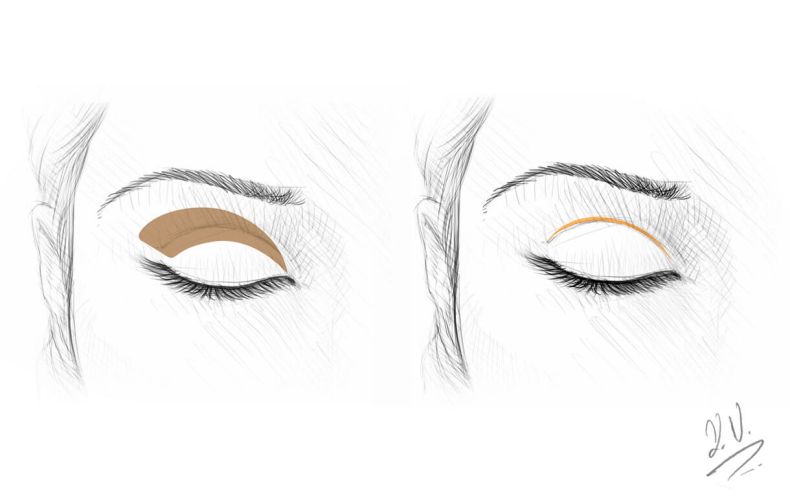The Modern Facelift: Precision, Expertise, and Results That Truly Transform
The contemporary facelift is a highly advanced procedure designed to address the unmistakable signs of aging with natural, harmonious results. Unlike older techniques that relied mainly on pulling the skin tight, today’s facelifts focus on restoring the deeper facial structures—repositioning tissue, replacing lost volume, and lifting in anatomically correct vectors.
This modern approach achieves a rejuvenated, balanced appearance without the “overdone” look of the past. It respects your individual facial anatomy and delivers results that are refined, long-lasting, and uniquely tailored to you.
Treatment Overview
Procedure:
Outpatient. After surgery short inpatient care in private patient room
Dauer des Verfahrens:
3 – 4 hours
Anesthesia:
Twillight sleep or local anesthesia
Downtime:
1 week
Complementary Treatments:
Cost:
CHF 14’500.– for mini or SMAS Facelift
CHF 18’500.- for Deep Plane Facelift
CHF 15’500.- for Necklift
CHF 24’500.- for combined Facelift and Necklift
Financing:
Flexible payment plans starting at 250 CHF/ month. More details here.
Dr. Kelly® All Inclusive
Everything included – one price, no surprise. See below for details.
What is a facelift?
If facial sagging has progressed beyond the early stages, only a surgical facelift can reposition the deeper structures responsible for the aged appearance. Ageing does not occur in the skin alone—what we see on the surface is the consequence of changes in the underlying anatomy.
As we age, the SMAS layer (the fibromuscular layer that connects skin, fat, and facial muscles) begins to descend. Ligaments that normally hold the midface, jawline, and neck in place weaken. Fat pads lose volume or shift downward, creating heaviness around the lower face, jowls, and a less defined jawline. These changes happen in planes that cannot be lifted or repositioned with fillers, threads, or energy-based devices.
A modern facelift addresses exactly these anatomical shifts. Instead of pulling the skin tight, we work in the deeper tissue layers:
The SMAS and deep plane tissues are lifted and secured back into their youthful position.
Facial ligaments are released and resuspended, restoring natural support.
Excess skin is removed sparingly, ensuring a soft, harmonious look.
Lost volume is restored through microfat transfer when needed, recreating youthful contours without a “filled” appearance.
This technique respects your facial identity. Your characteristic expressions and proportions remain intact—simply refreshed, defined, and elevated to a more youthful position. The result is a refined, natural rejuvenation without the telltale signs of surgery.

Everything included – one price, no surprise
At Dr. Kelly®, transparency comes first. Our surgical fee includes:
- Surgery & surgical team (including anaesthesia, consumables, operating room, private ward)
- All follow-up visits – including extra appointments if needed
- Complication management according to medical standards
- Lifetime support for your surgical journey in our clinic*
- Result & safety assurance: we stand by your outcome – professionally and personally
- No Extra insurance needed: We got you covered, all the way to your result
Pay once – everything is included. No hidden fees, no unexpected costs.
How does the facelift work?
There are many described techniques for performing a facelift: mini-lift, SMAS plication, SMAS flap, short-scar, deep-plane and more. They differ in the length of the incision, the depth and vector of the tissue lift, and the extent of supporting structures corrected. What recent evidence shows is that when two different techniques are applied to similar patients by a highly skilled surgeon, the results may be very comparable — emphasising that the surgeon’s experience and aesthetic sensibility matter more than the name of the technique. At our clinic, we believe that each procedure must be tailored carefully to your individual anatomy and aesthetic goals. We want you to look refreshed, youthful, balanced and natural — and always above all safe. The most important balance is between achieving the best result and doing so by the safest route.
The modern facelift is therefore based on a multimodal approach: surgical repositioning of tissues, fat grafting to restore volume, fillers & botulinum toxin where needed, laser or chemical peel for skin quality — the goal is not only to remove excess skin, but to restore the deeper architecture of the face, rejuvenate the skin envelope and deliver a result that endures. Newer surgical procedures allow for shorter scars, reduced tissue trauma and quicker recoveries, but the key remains: correct indication + meticulous execution = safe, natural, lasting outcome.
Which Facelift Technique Do I Need?
Every face ages differently. Genetics, skin quality, bone structure, lifestyle, and previous treatments all influence how tissues descend and where support is needed. For this reason, there is no “one” facelift that fits everyone. Instead, we choose the technique that best addresses your individual anatomy and aesthetic goals — safely, naturally, and with long-lasting results.
Below is an overview of the most established facelift techniques and when each one is most suitable.
Mini-Facelift
What it is:
A limited-incision lift focusing primarily on the lower face. Depending on the surgeon, the mini-lift may involve only skin tightening or a light SMAS adjustment.
Best for:
- Early signs of aging
- Mild jowls
- Patients in their 40s–50s with good skin elasticity
- Those seeking a shorter recovery
Limitations:
Does not correct deeper structural changes or significant midface/neck aging.
SMAS Facelift
What it is:
A technique that lifts the SMAS layer (Superficial MusculoAponeurotic System), the key support structure under the skin. This allows repositioning of the deeper tissues before removing any excess skin.
Best for:
- Jowls
- Reduced jawline definition
- Moderate sagging of the mid and lower face
- Patients who want natural, long-lasting results
Why it works well:
Lifting the SMAS produces structural improvement without tension on the skin.
Short-Scar Facelift (MACS / Minimal Access)
What it is:
A modern, less invasive facelift with a shorter incision and reduced skin undermining — still with SMAS repositioning, but with less surgical trauma.
Best for:
- Patients wanting less downtime
- Moderate facial sagging
- Individuals with good skin quality who prefer minimal scarring
Characteristics:
A balanced approach between recovery time and effectiveness.
Deep-Plane Facelift
What it is:
A more advanced technique performed in deeper anatomical planes. Here, the surgeon releases key retaining ligaments, repositions drooping fat pads, and lifts the entire facial unit from beneath the SMAS.
Best for:
- Advanced aging changes
- Midface descent
- Deep nasolabial folds
- Heavier jowls
- Combined lower face and neck laxity
Why it is powerful:
It offers one of the most natural and durable rejuvenations, restoring the facial structure from the deepest layer.
How We Choose the Right Technique for You
During your consultation, we assess:
- The quality and elasticity of your skin
- The position of fat pads and supporting ligaments
- Your bone structure
- Your natural facial proportions
- Your desired degree of rejuvenation
- Your healing capacity and safety profile
The best technique is the one that:
- Corrects the true anatomical cause of your aging,
- Achieves the most natural rejuvenation,
- Provides the highest level of safety,
Fits your lifestyle and recovery capacity.
A Modern Facelift Is Multimodal
Regardless of the technique, the most beautiful and long-lasting results are achieved when surgery is combined with:
- Microfat grafting
- Fillers (where appropriate)
- Muscle relaxation (Botox)
- Laser treatments
- Chemical peels
- Medical skincare
A facelift restores position — the skin and its quality must also be rejuvenated.

Can a Facelift be combined with other treatments?
Absolutely — and in most cases, a facelift achieves its most powerful and natural results when combined with complementary procedures. Aging rarely affects only one area. The face, neck, eyelids, brows, volume distribution and skin quality change together. A modern, contemporary rejuvenation therefore addresses all layers in a harmonious way.
Neck Lift
The neck is one of the earliest areas to show aging because its skin is thinner and less elastic. Sagging skin, banding, and loss of contour cannot be corrected with non-surgical treatments alone.
A facelift is most effective when performed together with a neck lift, as this restores the entire lower face–neck unit and provides a seamless, defined jawline.
Nano-Fat or Micro-Fat Transfer (Volume Restoration)
Structural aging is not only about sagging — it is also about volume loss. With advancing age, fat pads shift downward or shrink, leaving the midface flat and the lower face heavier.
Adding nano- or micro-fat transfer during a facelift restores youthful contours, improves skin quality, and supports long-term stability of the result.
Eyelid Surgery (Upper & Lower Blepharoplasty)
A refreshed lower face can look incomplete if the eyes still appear tired.
Blepharoplasty beautifully complements a facelift by opening the eye area, removing excess skin, and correcting fat herniation for a harmonious overall result.
Endoscopic Brow Lift
A minimally invasive brow lift elevates the eyebrows in their natural position and softens heaviness over the upper eyelids. Combined with a facelift, it creates a balanced and youthful upper-third of the face.
Skin Rejuvenation: Chemical Peels & Fractional Laser
A facelift restores structure — but the skin envelope itself also needs rejuvenation.
Chemical peels and fractional laser treatments improve:
Fine lines
Pigmentation
Sun damage
Pore size
Skin texture
Together with surgery, they create a truly vibrant, fresh, and radiant appearance.
Our Philosophy
At Dr. Kelly®, a facelift is never “just a facelift.”
We follow a holistic, multimodal approach: repositioning deep tissues, restoring lost volume, rejuvenating the skin, and combining surgical and non-surgical methods to achieve the most natural, balanced, and long-lasting result.
Everything works together — beautifully and precisely.

How long is the downtime?
Recovery after a modern facelift is often far easier than patients anticipate. Because we use advanced, minimally traumatic surgical techniques, support you with anti-swelling medication and professional lymphatic drainage in our clinic, and give you clear post-operative instructions, most patients are fully socially presentable after just 7 days.
Healing still follows a natural process — but with the right technique and support, it becomes predictable, gentle, and easy to plan.
Recovery Overview (Typical Timeline)
Day 1–2
Mild swelling and tightness
Light activity at home is allowed
Most patients need only mild pain medication
Day 3–5
Swelling decreases noticeably
Bruising becomes lighter and easy to conceal
Energy levels improve; many feel “normal” again
Gentle walks and household tasks are fine
Day 7–10
Most patients feel confident returning to social life
Make-up can camouflage any remaining redness
Many already return to work during this time
Day 10–14
Social and professional life fully resumed
Most bruising has resolved
Face looks fresh, natural, and balanced
Return to Normal Activities
Work: often after 7–10 days
Light exercise: one week
Intense workouts: 3–4 weeks
Photos / events: 3–4 weeks
Final result: 3–6 months
What Makes Recovery Faster at Dr. Kelly® Group
Latest surgical methods with minimal trauma
Anti-swelling medication
Medical lymphatic lift-training to speed up healing
Tailored aftercare and close follow-up
A clear plan that makes recovery structured and predictable
Most importantly: if you follow our postoperative instructions, you can realistically expect to feel and look socially ready one week after surgery.
What Type of Anesthesia Is Used for a Facelift?
At Dr. Kelly®, all facelift procedures are performed under modern twilight anesthesia (sedation) combined with local anesthesia. This method offers the perfect balance between comfort, safety, and fast recovery — and has become one of the signature advantages of our clinic.
Why Twilight Anesthesia Is the Optimal Choice
Twilight anesthesia places you in a deep, calm, sleep-like state. You breathe on your own, feel no pain, and have no awareness of the procedure. Most patients describe the experience as falling asleep for a few minutes and waking up feeling refreshed.
Because we combine this with precisely administered local anesthesia, the entire surgical area is completely numb during and after the operation.
This approach provides benefits that full general anesthesia simply cannot offer:
Your Benefits at a Glance
- No pain during the procedure
- A deep, restful sleep-like state — without a breathing tube
- No nausea, no grogginess, and significantly fewer side effects than general anesthesia
- A quicker, clearer awakening — most patients are fully alert within minutes
- Faster recovery and lower complication risk
- You can go home just a few hours after surgery
- Reduced risks for patients with underlying health conditions
Why We Avoid General Anesthesia
Many clinics still perform facelifts under full general anesthesia. While it is safe in trained hands, it is associated with:
- a higher physiological stress load
- longer wake-up times
- more postoperative nausea and fatigue
- potentially increased risks for certain patient groups
- it demands an overnight stay, sometimes even two
For a facelift — a procedure focused on precision and patient comfort — this is usually unnecessary.
Our Specialty
Our team has extensive training and certification in procedural deep sedation, ensuring full patient safety. This expert approach allows us to offer the most comfortable and safest anesthesia option available for facelift patients today.
Do I have to stay overnight for a facelift?
No — in most cases, a facelift at Dr. Kelly® is safely performed on an outpatient basis. Thanks to our modern sedation technique (twilight anesthesia combined with local anesthesia) and our minimally invasive, tissue-preserving approach, patients recover quickly and comfortably without the need for hospital admission.
After the procedure, you will spend a monitoring period in your private patient room, where our team ensures that you wake up gently, feel well, and are fully stable. Once you are ready, you may go home accompanied by an escort, feeling clear, calm, and surprisingly fit.
To ensure your safety and peace of mind, you will receive:
detailed post-operative instructions,
your personal 24/7 emergency number, and
close follow-up in the first days after the surgery.
Optional Overnight Stay for Your Comfort
For patients who prefer additional comfort — and especially for those traveling from abroad or from other regions of Switzerland — we also offer the option of overnight accommodation in our private patient rooms.
This allows you to rest in a calm, luxurious environment with our team available on-site.
Whether you choose outpatient care or an overnight stay, you can rely on the same high level of safety, professionalism, and personalized support.
What do scars look like after a facelift?
Many patients worry about scars — but in modern facelift surgery, this is rarely a concern. With today’s refined techniques, precise incision placement, and meticulous closure, facelift scars are minimal, well-hidden, and naturally camouflaged in the hairline or around the ear. Most of our patients can comfortably wear their hair up again once healing is complete.
In other words: a modern facelift does not look operated.
Because each facelift technique involves a different surgical approach, the scars may vary slightly. Here is an overview based on the most common methods:
Mini-Facelift (Short Incision / Limited Lift)
Scar location: Around the front of the ear; sometimes only within the natural crease
Length: Very short
Visibility: Excellent — often barely noticeable once healed
Ideal for: Younger patients or those with early signs of sagging
Why minimal: Less skin undermining and limited access to deeper structures
Patients usually heal quickly and can wear their hair back without hesitation.
SMAS Facelift
Scar location:
Around the ear contour (in front and slightly behind the ear)
Occasionally extending a few centimeters into the hairline
Length: Moderate
Visibility: Excellent — placed along natural shadows of the ear
Ideal for: Midface and jawline sagging
This approach allows deeper structural correction while keeping scars discreet and natural.
Short-Scar / MACS Facelift
Scar location: In front of the ear, sometimes slightly into the temple hairline
Length: Shorter than a full SMAS facelift
Visibility: Very good; designed to avoid extending behind the ear
Ideal for: Patients seeking impactful results with minimal incision footprint
Perfect for individuals prioritizing shorter scars and faster recovery.
Deep-Plane Facelift
Scar location:
In front of and behind the ear
Often blended into the hairline for the most natural flow
Length: Slightly longer due to deeper anatomical work
Visibility: Excellent — advanced closure techniques make scars very discreet
Ideal for: Advanced aging, heavy midface descent, combined face–neck rejuvenation
Because the deeper layers carry the tension (not the skin), scars heal softer and finer.
Neck Lift and Platysmal Bands
When the neck requires additional correction (especially prominent platysmal bands):
A small incision under the chin is added
It heals extremely well due to the natural shadow under the chin
Used when central neck tightening or fat removal is needed
Why Scars Heal So Well at Dr. Kelly®
Incisions follow natural creases and shadows of the ear
No tension on the skin — deeper support layers carry the lift
Extremely fine suturing techniques
Postoperative scar management with medical skincare and laser if needed
Close follow-up and personalized wound-healing plan
The result: soft, fine scars that are barely visible — even when wearing a ponytail.
“A good facelift is one that cannot be seen. It refreshes your face without revealing that surgery ever took place.”
How long does a facelift last?
A surgical facelift remains the longest-lasting and most effective rejuvenation procedure in aesthetic medicine. No injectable, thread lift, or energy-based device can achieve the same degree of structural lifting — nor can they match the durability of surgical correction.
The results of a facelift are visible immediately, but they continue to refine over the first 3–6 months as swelling settles and the tissues adapt to their new, lifted position. Once healed, the change is dramatic, natural, and long-term.
A well-performed facelift does not stop the aging process — but it turns the clock back by 10 to 15 years, and you will continue to look significantly younger than you would have without surgery.
Longevity by Facelift Technique
Mini-Facelift
Duration: ~5–8 years
A limited-lift with shorter incisions. Because the deeper structures are only partially treated, results fade faster. Suitable for early aging, but not for patients with significant sagging.
Short-Scar / MACS Facelift
Duration: ~7–10 years
Repositions the SMAS to some degree. Longer-lasting than mini-lifts, but still limited in correcting deeper structural aging.
SMAS Facelift
Duration: ~8–12 years**
Addresses the SMAS layer — the true support structure of the face. Offers noticeably stronger, more stable, and more natural results than surface-focused techniques.
Deep-Plane Facelift
Duration: 10–15+ years
The most advanced and durable technique. By releasing and lifting the deeper ligaments and fat pads, the entire facial unit is repositioned.
This produces one of the most natural and longest-lasting outcomes in modern plastic surgery.
A Crucial Warning About “Mini Facelifts” Sold Online
There are many marketing terms such as “mini facelift,” “ponytail lift,” “weekend lift,” or “lunchtime lift.” These procedures often:
tighten only the skin
do not address the SMAS or deeper structures
put tension on the skin closure
create short-lived results (often <5 years)
can produce widened scars
may lead to unnatural pulling over time
For this reason, we do not recommend or offer superficial mini-lifting techniques. They do not meet our standards of safety, stability, or natural aesthetics.
A facelift must correct the deep anatomy, not just the skin — otherwise the results simply cannot last.
Maintaining Your Result Over Time
Sun protection, high-quality medical skincare, and holistic maintenance treatments significantly extend the longevity of your facelift.
To support you long-term, we offer our “Beauty Through the Ages” program — a personalized plan combining non-surgical rejuvenation, dermatology, and medical skincare to help your lifted, youthful appearance remain at its best through every decade of your life.
Facelift cost
Prices for a surgical facelift start from CHF 14,500.
Your well-being and an optimal result are our top priorities. Each patient has an individuality whose needs are the focus of my treatments. Therefore, it is not always possible to give a general estimate of the costs. Therefore, please understand that we cannot quote generally valid prices for surgical facelifting. The costs of each surgical treatment also depend on your personal initial situation and your wishes.
Are you interested in a surgical facelift and would like to know more about the prices?
Write us a message and arrange your consultation!
Why choose Dr. Kelly® for your surgery?
Switzerland’s top clinic for aesthetic surgery by number of procedures performed.
A team of board-certified plastic surgeons with international training.
Specialized across the full spectrum of cosmetic surgery – from facelifts to body contouring.
Advanced surgical methods for natural results with minimal scarring.
“No-touch” techniques and precision instruments for maximum safety.
Continuous refinement through the latest medical innovations.
Sedation instead of general anaesthesia – safer, gentler, and lower risk.
Faster, smoother recovery – most patients return home just hours after surgery.
AQC-certified in-house operating theatre for maximum control and safety.
Swiss precision in hygiene, monitoring, and standards of care.
Tailored recovery protocols to reduce downtime.
Lymphatic drainage and medical-grade scar care for optimal healing.
Optional laser refinement for smooth, discreet results.
100% personalized treatment plans – never one-size-fits-all.
Techniques and outcomes tailored to your body and your wishes.
Focus on harmony, proportion, and your unique aesthetic journey.
We don’t do overdone.
Every outcome reflects elegant, timeless beauty.
Subtle enhancements for a natural, confident look.
Highest patient satisfaction and top Google reviews in Switzerland.
Long-term relationships built on personal, genuine care.
International patients choose us for Swiss precision and discretion.
FAQ
You may be a good candidate if you notice sagging in the cheeks, jawline, or neck that no longer responds to non-surgical treatments. Ideal candidates are healthy, have realistic expectations, and want a natural result that restores balance and definition without changing their identity.
During your consultation, we assess your facial anatomy in detail and recommend the technique that best fits your goals, structure, and lifestyle.
The appropriate technique depends on your facial structure, degree of tissue descent, age, and skin quality.
Typical indications:
- Mini-Facelift: early jowls, mild sagging, usually in the 40s
- Short-Scar / MACS: moderate facial aging, late 40s
- SMAS Facelift: deeper structural aging, 50s–70s
- Deep-Plane Facelift: advanced midface and neck sagging, often 50s–70s+
We recommend the technique that provides the most natural, safest, and longest-lasting result for your individual anatomy.
There is no universally “correct” age — the right time is when structural sagging can no longer be corrected with fillers, threads, or devices.
General tendencies:
- Early 40s: ideal for subtle lifts or early short-scar techniques
- 50s–60s: the most common age for SMAS or deep-plane facelifts
- 60s–70s+: deep-plane + neck lift for full rejuvenation
- Any age: if non-surgical treatments no longer achieve harmony
The earlier a facelift is performed within reason, the more subtle and long-lasting the result.
Most patients are surprised by how little pain they experience.
Because we use twilight (deep) sedation combined with targeted local anesthesia, the procedure itself is completely painless.
After the surgery:
- Discomfort is usually mild and described more as tightness or pressure
- Most patients manage well with mild pain medication for a few days
- There is rarely sharp pain
- Swelling and bruising are expected but not typically painful
With our modern technique, anti-swelling medication, and professional lymphatic treatments, recovery is smooth and well tolerated.
No. Modern facelift surgery lifts the deeper structural layers of the face, not the skin. This prevents tension on the surface and avoids the “pulled” or overdone appearance associated with older methods.
Your expression, character, and natural proportions remain completely intact — simply refreshed, more defined, and rejuvenated.
Aftercare is essential for maintaining a beautiful, long-term result.
Your personalized aftercare plan includes:
- medical lymphatic treatments
- anti-swelling medication
- tailored medical skincare
- detailed healing instructions
- a structured follow-up schedule
- long-term maintenance through our Beauty Through The Ages program
This holistic approach ensures that your lifted contours remain defined and your skin stays radiant for many years.

Other treatments for sagging skin
Matching articles

Dr. Kelly® | Aesthetic Surgery and Medicine
by Dr. Kelly Vasileiadou
Luzernerstrasse 72
CH-6333 Hünenberg See
Mo – Fr 9 - 6.30 pm
Sa – So closed
















